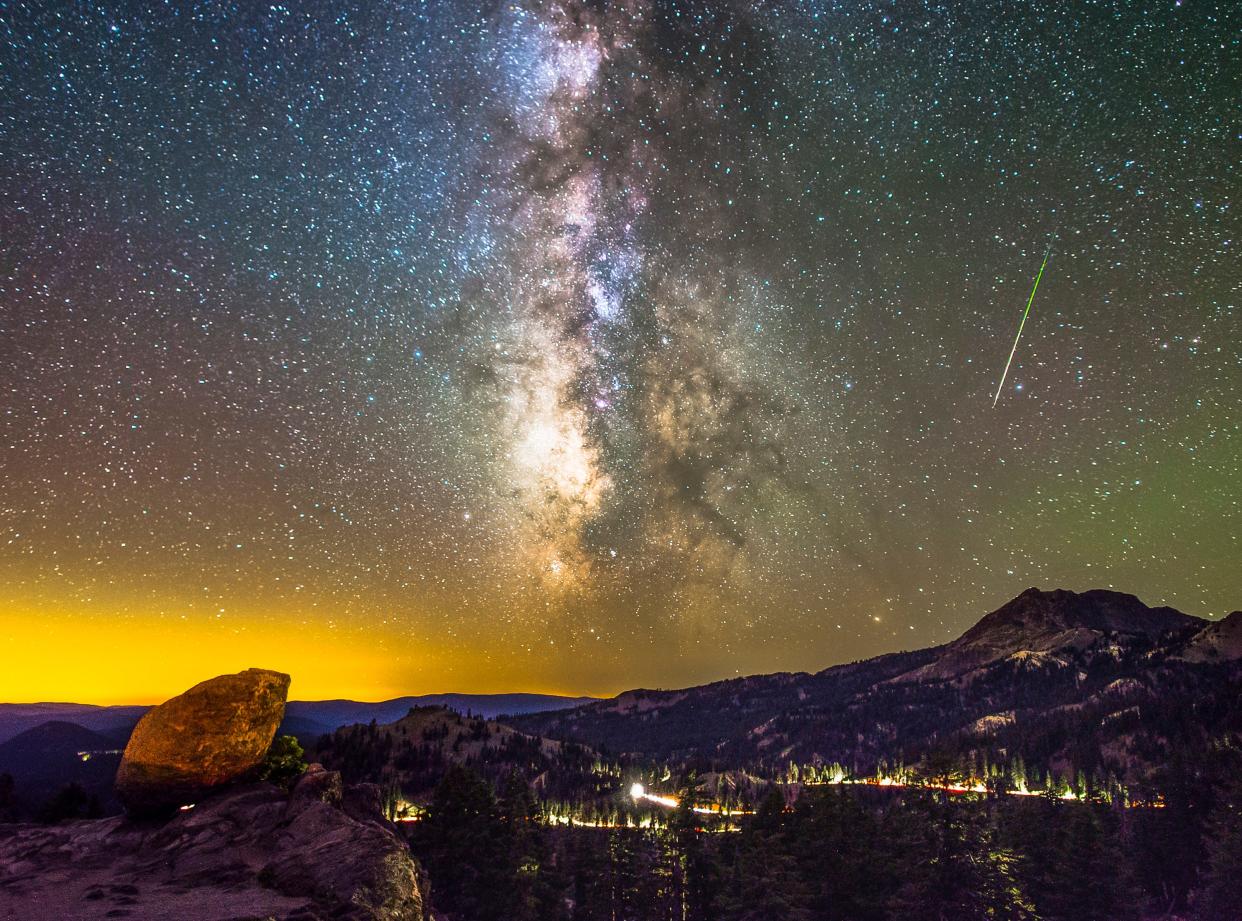The dazzling Perseid Meteor Shower has started. Here's how to see it in Oklahoma

Oklahomans can now see specs of dust and rocks streak across the sky during the Perseid Meteor Shower, the most dazzling annual meteor shower seen from Earth, as it returns to a night sky near you this summer.
That comet last visited Earth in 1995. It orbits the sun every 133 years, so it will be about a century before Swift-Tuttle swings around again. But it left us a gift in its wake: A huge cloud of dust and pebbles. When Earth passes through that cloud every summer, the show is spectacular when seen from dark places.
Several features make the Perseids a not-to-miss sight over other annual meteor showers, according to NASA:
Meteors are very fast and bright, and as they enter Earth's atmosphere, they leave long streaks of light and color.
There are plenty of meteors to watch — 50 to 100 meteors per hour of varying brightness during peak times and dates.
You can see many of the meteors with the naked eye. The brightest fireballs may be visible in cities where ambient light washes out most night-sky objects.
How to see the Perseid Meteor Shower
According to NASA, the celestial show is best viewed in the Northern Hemisphere during the pre-dawn hours, but sometimes its possible to view meteors as early as 10 p.m.
Perseids feature about 50 to 100 meteors per hour, according to NASA, leaving long "wakes" of light and color behind them. Peresids' fireballs persist longer than an average meteor strike.
Where to learn more Perseids Shower
To read more about the Perseids, go to NASA's website at go.nasa.gov/3wTi56n.
More meteor showers on the horizon in 2024
While other meteor showers aren't as dramatic as the Persids, there are more meteor showers coming in 2024, from September through December.
The number of meteors visible per hour is based on the darkest skies. So, if you're viewing in an area with streetlights or other artificial light, count on seeing fewer fireballs.
Most are most visible to the naked eye, according to NASA, the Old Farmer's Almanac, SeaSky.org, EarthSky.org and the American Meteor Society. Times and dates are adjusted for Pacific Standard Time, so some dates may differ from sources that list East Coast or Coordinated Universal Time (UTC).
Taurids meteor showers: These long sparse showers originate in the southern sky. They’re created when the Earth passes through two debris fields: One left by an asteroid, the other left by a comet. The South Taurids are from Sept. 23 to Nov. 12, peaking late at night on Nov. 4 to 5. The North Taurids are from Oct. 13 to Dec. 2, peaking around Nov. 11 to 12. Best times to watch are 10 p.m. to midnight on Nov. 4, when the two showers overlap. Average meteors per hour: Three to 10
Draconids Meteor Shower: This show peaks on Oct. 7 to 8 in the northwest sky. Best times to watch are early evening hours to midnight. Average meteors per hour: Six to 10
Orionids Meteor Shower: Halley’s comet created this dust shower, which peaks on Oct. 21 to 22. It originates in the southern sky. Best times to watch are around midnight. Average meteors per hour: 10-20
Leonids Meteor Shower: Look to the southern sky to see the Leonids, peaking from Nov. 17 to 18. Best times to watch are between midnight and dawn, but the bright moon may wash out faint fireballs. This shower varies, with a few fizzling fireballs per hour some years, then pounding the atmosphere with hundreds about every 33rd year. The last big shower was in 2001. This year will likely be a light one. Average meteors per hour: 10-15
Geminids Meteor Shower: Watch at any time on Dec. 13 into Dec. 14 to see this shower at its peak. The Geminids originate from the northeastern sky. Average meteors per hour: 75, with periods of up to 120
Ursids Meteor Shower: This brief little shower — originating from the northern sky — is debris left by comet 108P/Tuttle. It peaks on Dec. 21 and 22. Best times to watch are from midnight to dawn. Average meteors per hour: Five
For more information on these and other sky-watching events, go to NASA at spaceplace.nasa.gov and astronomy sites Earth/Sky.org, SeaSky.org and SkyAndTelescope.org. For meteor shower updates go to the International Meteor Organization website at imo.net.
This article originally appeared on Oklahoman: Perseid Meteor Shower 2024 starts soon: How to watch in Oklahoma

